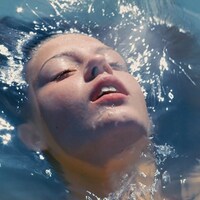From skin enhancing chocolate to Beauty Dust, edible beauty has gone viral. But does it really work?
Edible beauty isn’t a new concept. There is an ancient Chinese recipe for a “beauty soup,” for example, which includes goji berries, dates, pears and mushrooms - all ingredients that contain strong hydrating properties to nourish your blood and yin (feminine energy), two vital substances that support a vibrant and youthful appearance. These herbs are also beneficial to your lungs, which, in traditional Chinese medicine, can influence both skin and overall complexion. Fast-forward to today and edible beauty has had a modern makeover with a new wave of edible products that are targeted towards both beauty and wellness dominating the market. But do they really work?
The trend was spotlighted back in 2014 by trend forecasting service WGSN. “Beauty begins from within,” read the report. “Brands such as Ocoo, Neal’s Yard Remedies and Dr. Perricone are building followings with products that help improve skin, hair, nails and overall dietary health. Supplements, powders and drinks that help promote beauty are also seeing increased popularity. The race to be a better, faster, stronger self starts with every new year and now a healthier, fitter, more-ready-for-swimsuit-season you is as close as your fridge or kitchen cupboard!” Five years on and business is booming, soaring to $1.1b in 2017 as one study pointed out and projected to grow even more.
And it’s no wonder: the main concept behind the edible beauty movement is that beauty begins from within and that swallowing a particular ingredient can have the same, if not better, effect as rubbing it on our skin. “If you think about how few drugs are delivered in patch format, and how many are by pill or injection, that gives you an idea of how difficult it is to get something through the skin,” says Dr Gary Moss of the School of Pharmacy at Keele University.
So what does edible beauty look like? Today it goes well beyond traditional supplements to include drinks and mystical sounding dusts. A quick Google search reveals that chocolate is particularly popular amongst edible beauty brands. From probiotic formulations to powder superfood concoctions, there are a wealth of chocolatey products on offer with promises of perfect hair, skin, and nails. In fact, the world’s first sugar-free chocolate supplement was just released by Ceramiracle, the California based beauty brand.
“Magical chocolate flavoured powders, collagen boosting drinks and mysterious sounding dusts designed to make you look beautiful - it sounds almost too good to be true”
Then there is cult wellness brand Moon Juice. Stepping into one of founder Amanda Chantal Bacon’s L.A. stores is akin to walking inside a modern laboratory of cleanliness, health and beauty, with colourful drinks and powders lined up one by one along shelves, each with their own purpose. The brand is best-known for its signature edible Moon Dusts which are targeted towards specific areas of beauty and wellness. There’s Brain Dust which promises enhanced focus and mental stamina, Sex Dust which enhances creativity in or out of the bedroom, and, by far the most popular, the Beauty Dust, described on the website as “a beautifying adaptogenic blend of Schisandra, Amla, Ashwagandha, Rehmannia, Goji and Pearl that targets stress and is known to combat accelerated aging, help protect from free radicals, and improve skin clarity.” The dusts can be mixed into coffee, tea, water or any non-carbonated drink.
Another popular product is Skinade, a specially formulated drink that aims at improving the overall look and health of skin in 30 days. “It works from the inside out to rebuild and strengthen the collagen matrix below the skin’s surface, boost natural levels of hydration and reduce the appearance of fine lines and wrinkles,” according to the website and was developed by leading UK scientists. The product lists high-grade collagen and Vitamin B complexes as ingredients among others.
Magical chocolate flavoured powders, collagen boosting drinks and mysterious sounding dusts designed to make you look beautiful - it sounds almost too good to be true. According to some experts, it might just well be, especially when a lot of the edible beauty brands out there are using ingredients that haven’t been evaluated by the Food and Drug Administration. “A lot of the currently marketed beauty drinks are a little scammy in the sense that they don't use clinically backed ingredients,” says Jenny Peng, founder of Cosaki Club, a beauty brand focused on providing 'beauty drinks' which only have ingredients backed by clinical research. “Moon Juice is focused on ayurvedic remedies but a lot of the ingredients inside the Beauty Dust product don't have peer-reviewed clinical research that ties them to helping beauty. I believe that most of the people who claim it works are experiencing placebo, or just reduced stress which leads to subtle improvements in beauty.”
“It’s also important to use edible beauty products as an adjunctive to an optimised diet, not just a one-stop solution”
Another problem is the quantity of the ingredients actually used. According to Peng, some brands “intentionally mislead by using such a small amount of ingredient that it doesn't make any difference.” This is particularly the case for supplement drinks touting the benefits of collagen (for anti-ageing properties). “Another common scam is a product being marked as 'collagen',” Peng continues, “but actually only includes a couple of mgs of collagen that are below the effective level.” In terms of dosage, many powdered supplements recommend 10 grams or more per serving. But they can also vary for each individual depending on age, gender, body weight and health issues. When in doubt, consult your doctor or reference scientific studies. One study expressed that 10 grams of collagen peptides in the form of a fruit-based beverage were significantly more successful in decreasing the depth of existing skin wrinkles compared to placebo after nine weeks. Drinks like Skinade, for example, only have seven grams of collagen in, while Dirty Lemon has only four grams.
With key skincare and wellness ingredients being transformed into accessible food and drink, the future of edible wellness and beauty is sure to grow. But in terms of whether or not we all should be jumping at the chance to invest in these products, the overwhelming piece of advice seems to be to research the ingredients and their correct dosages. “Examples of ingredients which have been proven to help benefit beauty are Collagen, Hyaluronic Acid, Vitamin C,” Peng says, but again only in the correct dosage. To check this, Peng suggests checking Examine.com. It’s also important to use edible beauty products as an adjunctive to an optimised diet, not just a one-stop solution. “If you incorporate a high-quality collagen powder (such as an organic marine collagen powder) into your daily health regimen, it will help to boost skin hydration and elasticity. It’s also important to hydrate from the inside out,” explains Dr Whitney Bowe, Board Certified Dermatologist and HALO Sport (a new wellness sports drink) Advisory Board Member. “Without ample hydration, skin loses elasticity, ages more quickly, and in general looks dry, flaky, and dull.”
At the end of the day, like any other product on the market, snacking on beauty chocolate or retinol juice once isn’t going to magically transform you into the most beautiful person in the room. Still, with a market that’s projected to grow so rapidly, it’s definitely worth considering incorporating some bits of edible beauty into your current routine. As bigger companies take on their own versions of beauty drinks, powders and gummies, the ingredients, research and technology is only sure to grow.










